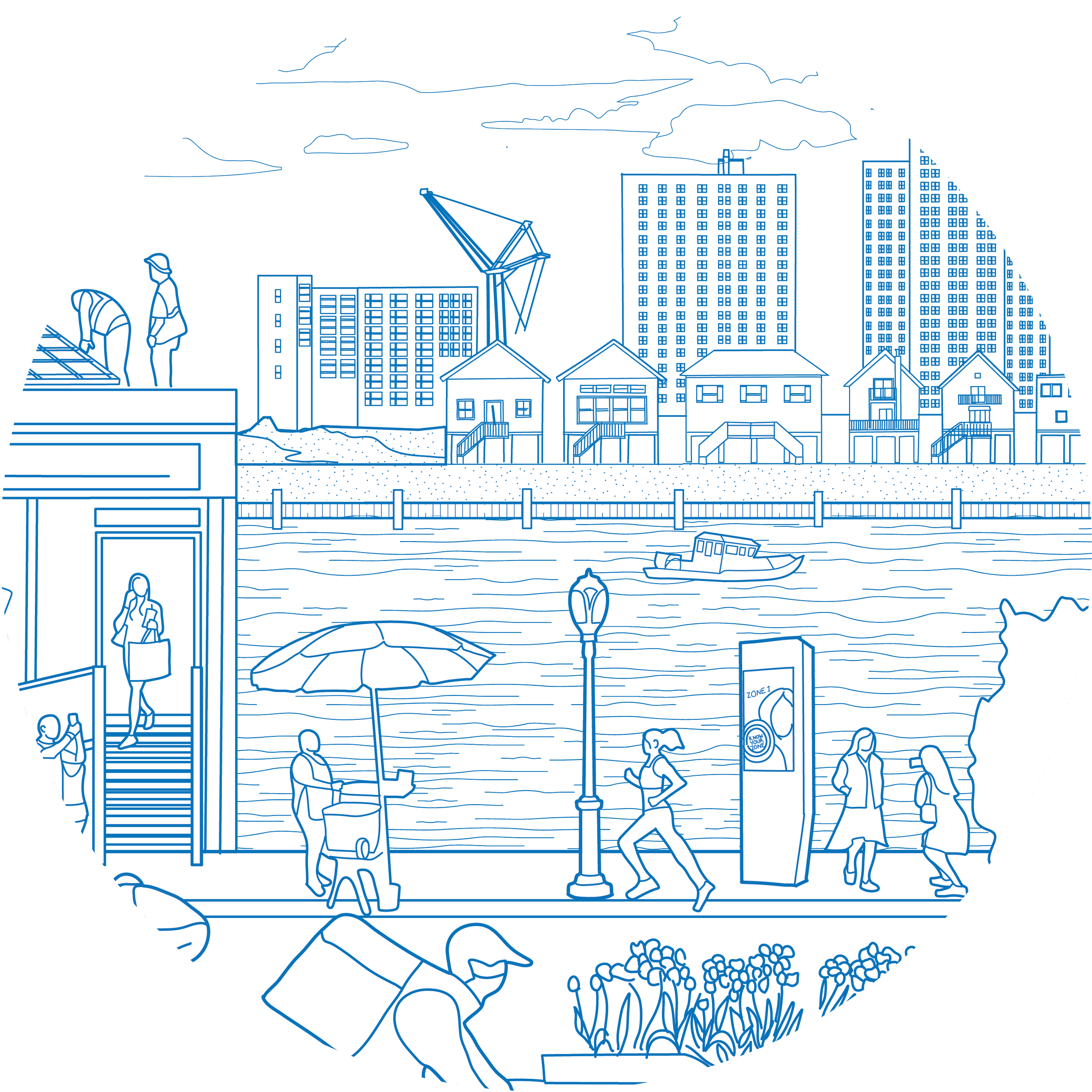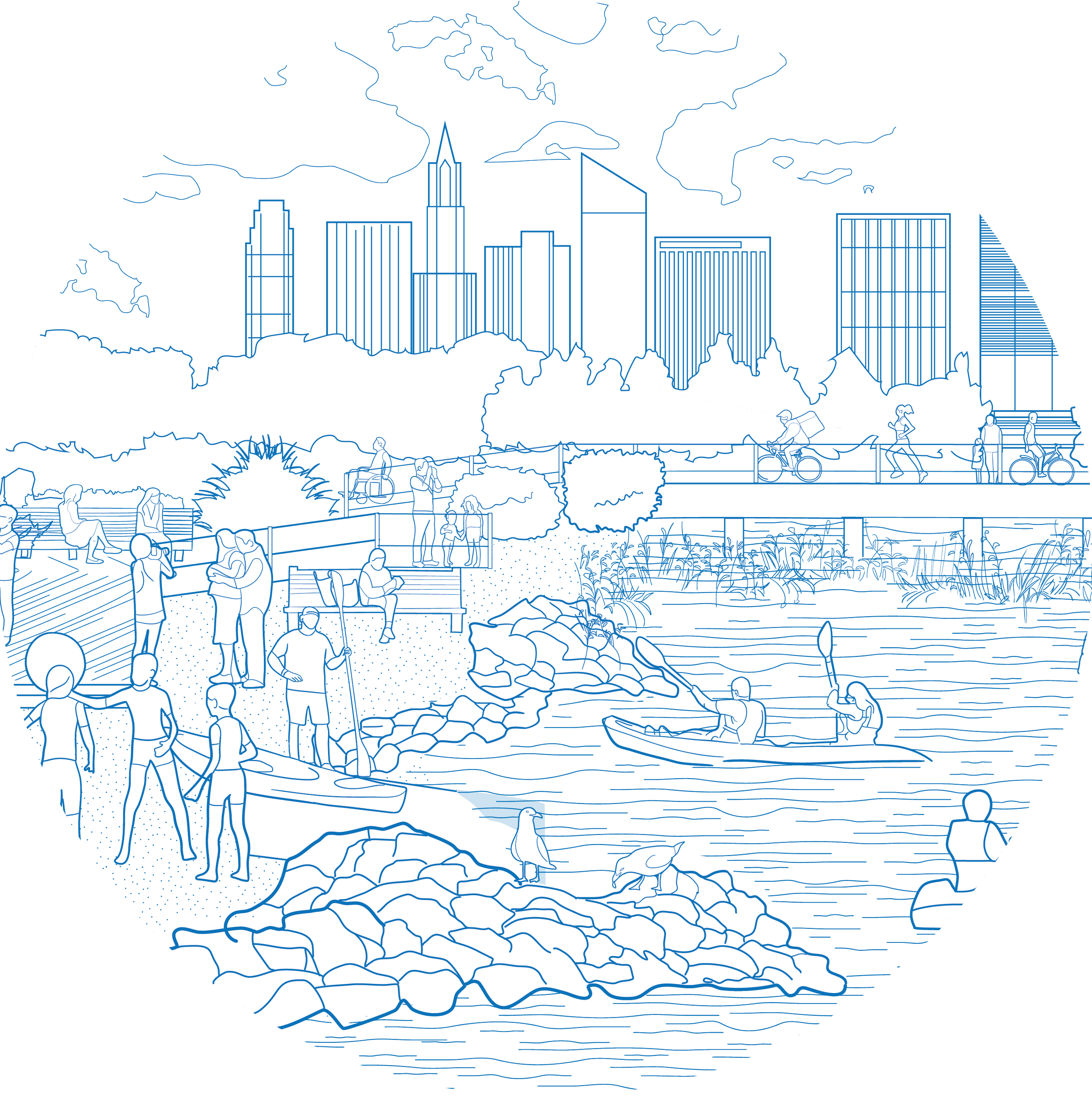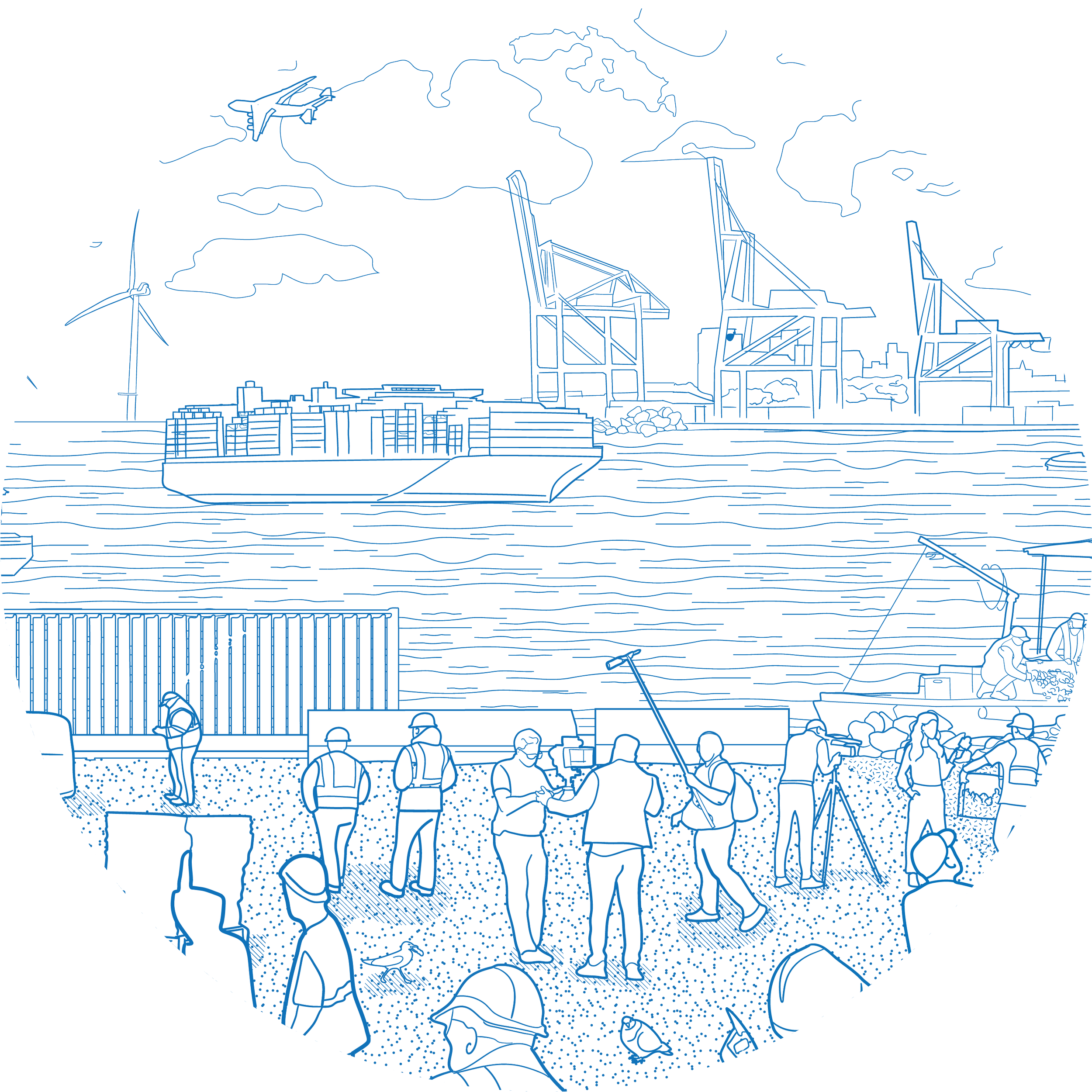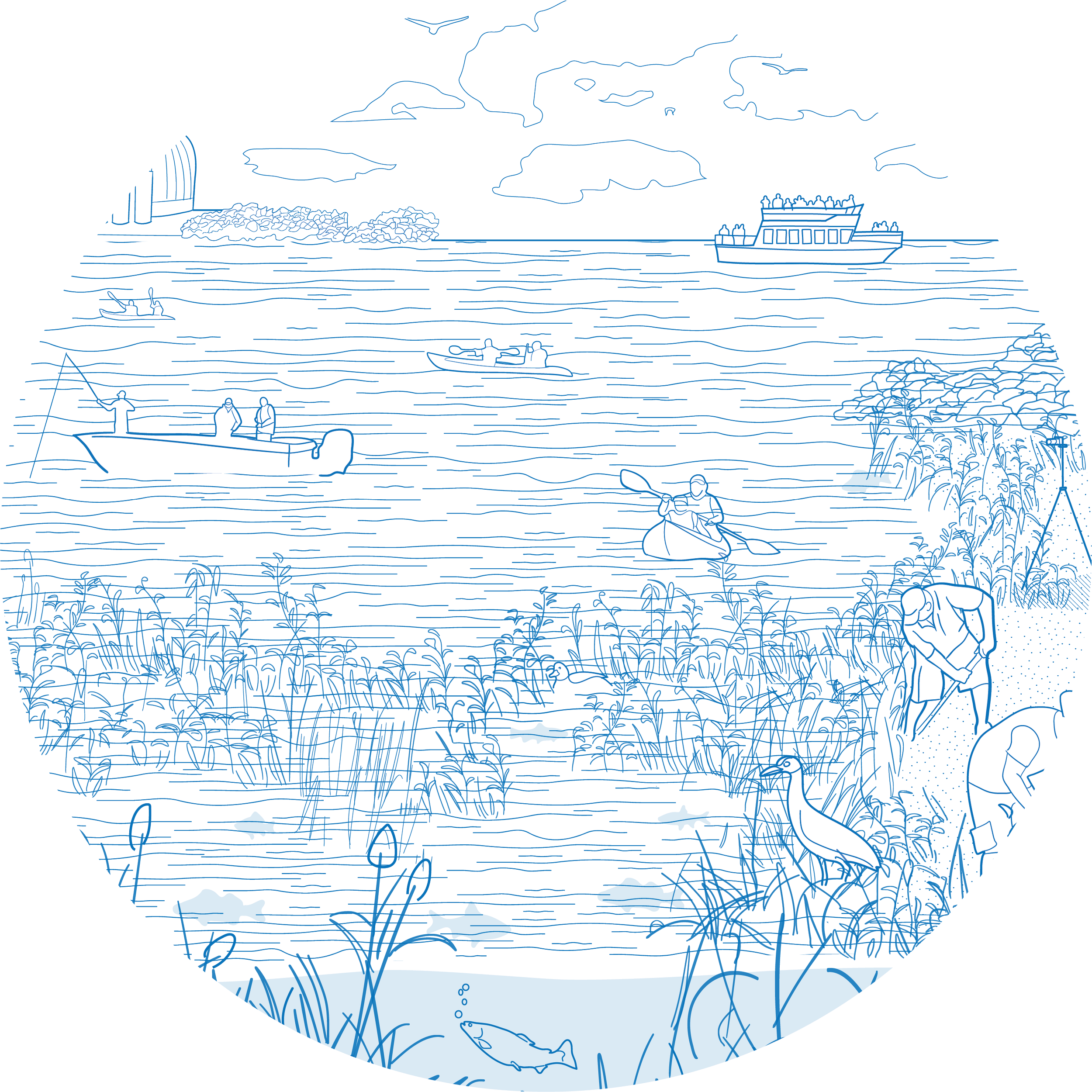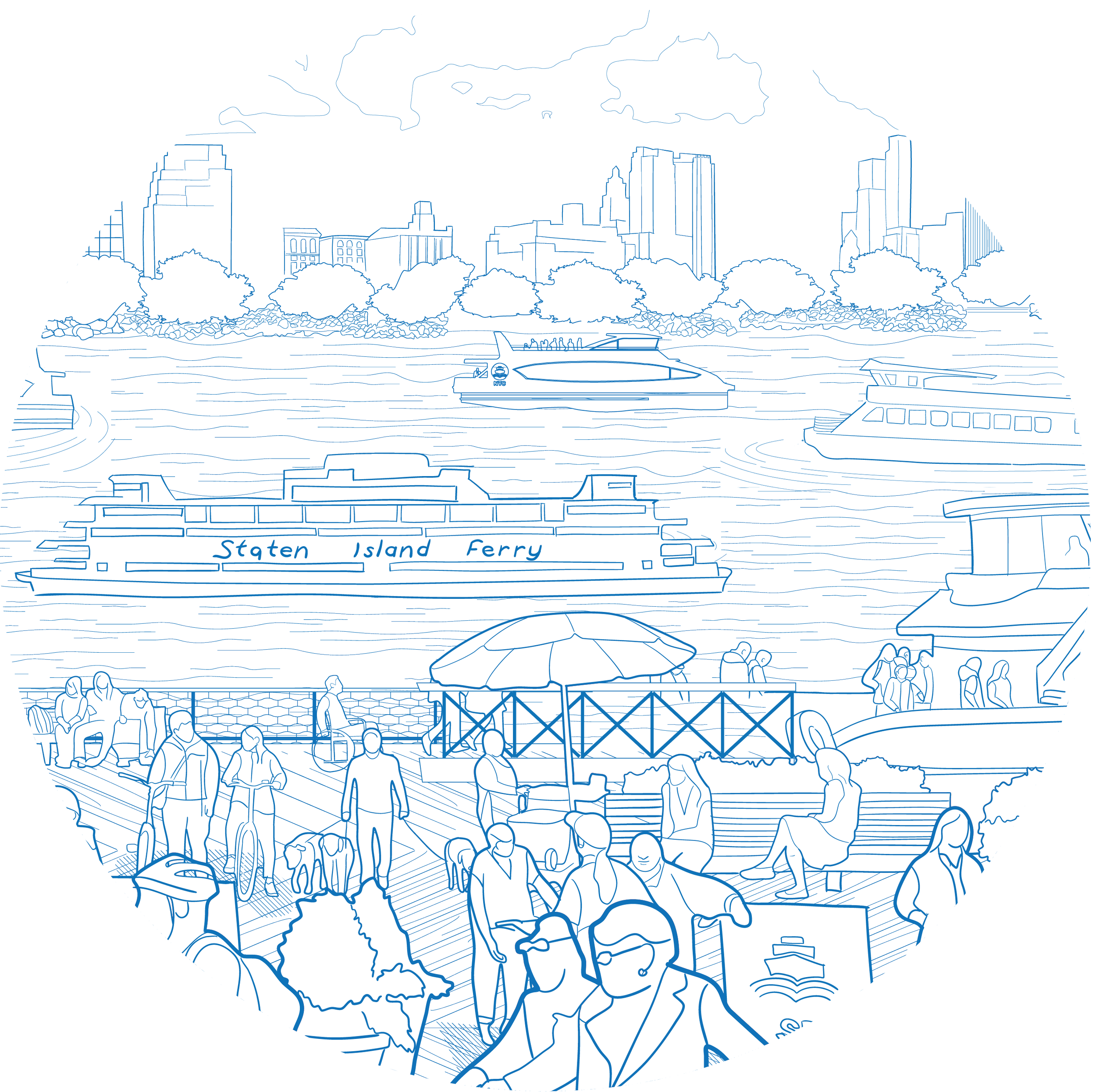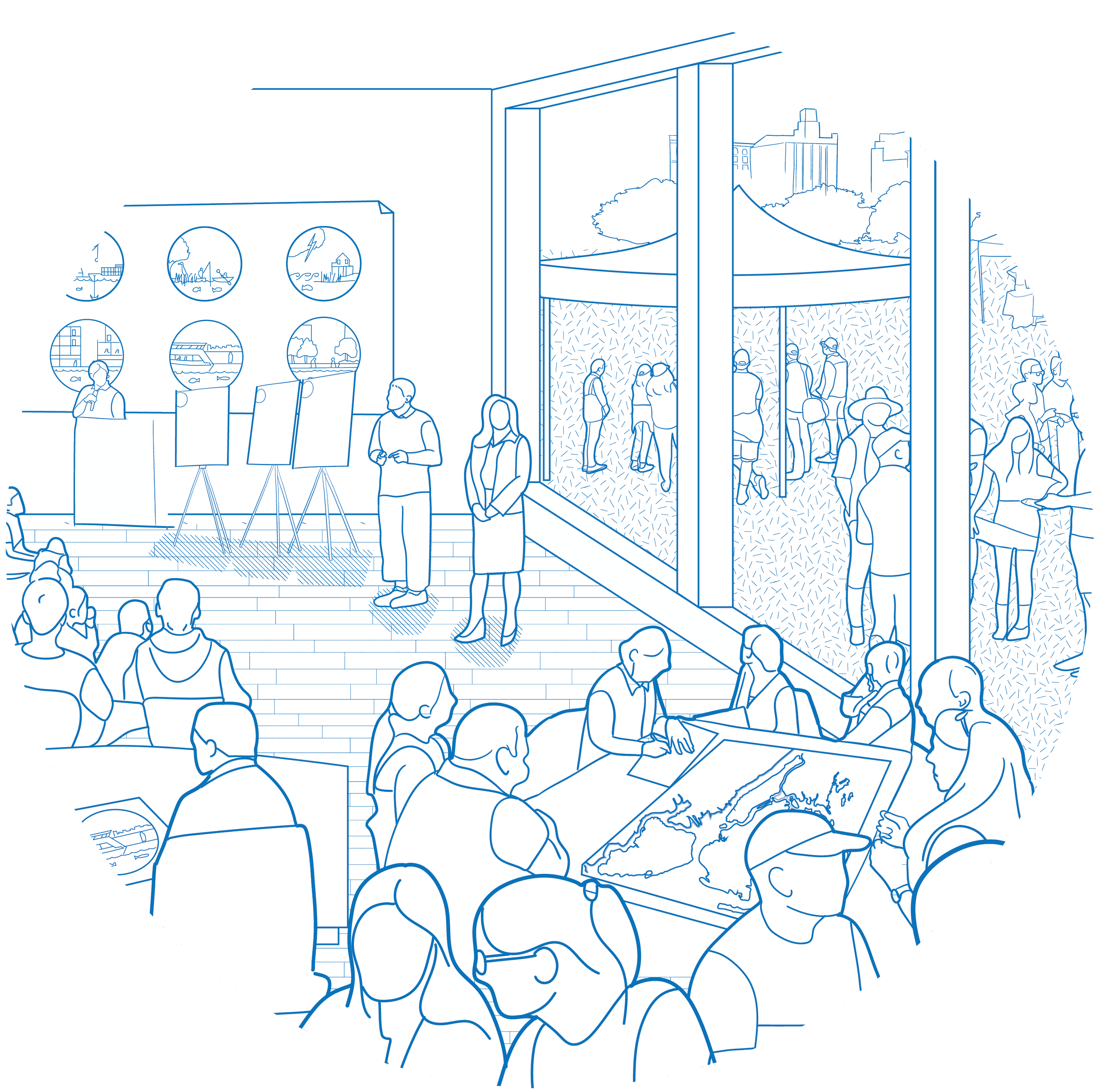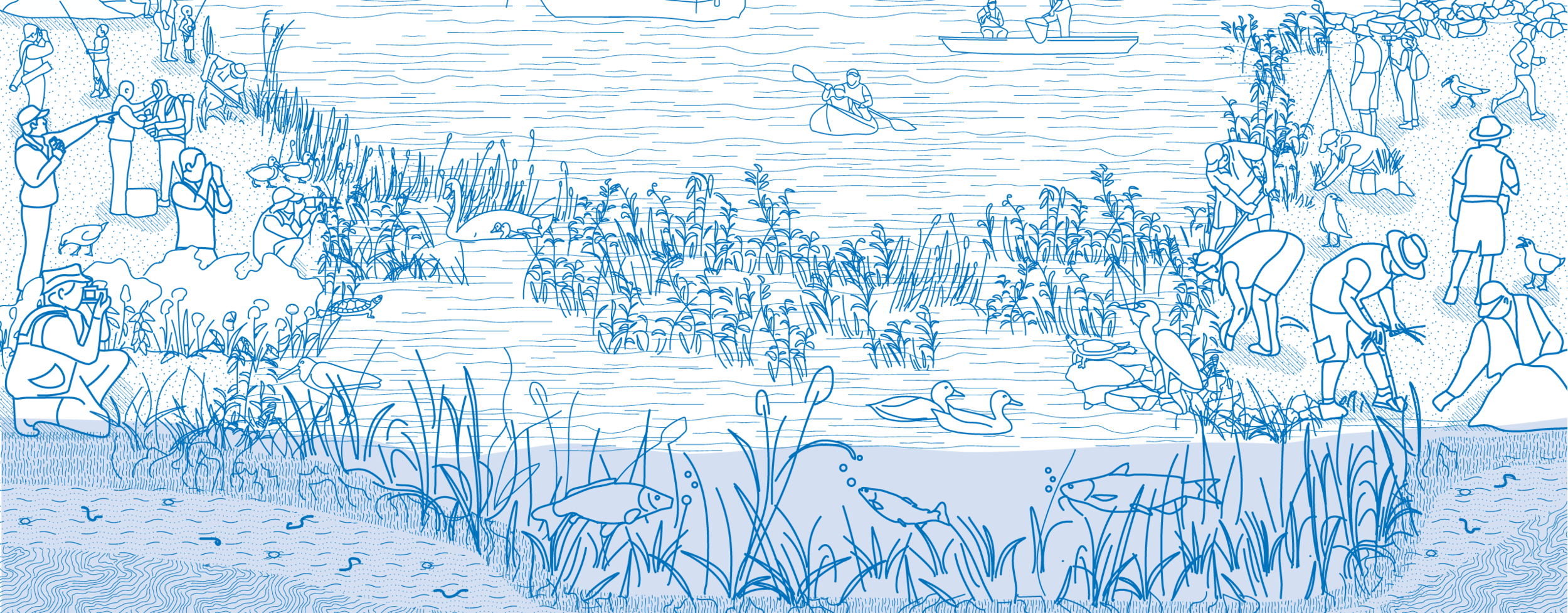
Water Quality and Natural Resources
In the next 10 years, New Yorkers will have access to cleaner bodies of water, expanded water safety education and more interaction with nature. The City has opportunities to build on its multibillion-dollar investments to improve water quality through various programs and policies. The City will continue to maintain and restore the waterfront’s natural habitats and ecological diversity through robust planning and research, especially in the face of climate change.
With more than 520 miles of shoreline and an interconnected network of islands, NYC is a city of water and diverse marine habitats. Clean waterways allow residents and visitors to engage in safe and healthy recreational activities, such as swimming at one of NYC’s many public beaches, fishing and boating. NYC’s coastal ecosystems provide many benefits for people and the environments by promoting biodiversity and mitigating the effects of climate change.
Building on a focus on environmental remediation that goes back to the 1992 Plan, the City remains committed to cleaning its waterways by addressing environmental contamination, loss of natural resources and crumbling infrastructure. The City has earmarked $1.6 billion for green infrastructure. More than 11,000 rain gardens have already been built to collect and absorb stormwater before it enters our sewer system. Rain gardens reduce the pollution that enters and harms NYC’s waterways, and more rain gardens are being planned.
Key partnerships among the City, State and community organizations also have helped advance in-water restorations, expand habitats and promote biodiversity. Over the past few years, millions of oysters, which function as natural filters for cleaning waterbodies, have been restored to NYC’s waters. In 2019, the State announced $1.5 million in capital funding to help create approximately four acres of enhanced habitat for between 5 million and 10 million oysters in the Hudson River Park’s Estuarine Sanctuary. Oyster monitoring stations and community oyster reefs — maintained by the Billion Oyster Project in collaboration with community scientists — are located throughout the five boroughs. Future habitat improvements may include the installation of reef balls, gabion baskets and mounds of recycled shells to create habitat corridors between piers.
Improve water quality throughout the five boroughs and build upon key agency and public partner collaborations
+ How can we do it?
Protect ecosystems, support ecosystem services, and enhance biodiversity of the natural waterfront, including in-water strategies
+ How can we do it?
Help connect New Yorkers with waterfront ecology and raise awareness of water quality and habitat protection
+ How can we do it?
Utilize new and existing data sources to assess natural resources and inform decision making for restoration and protection
+ How can we do it?
